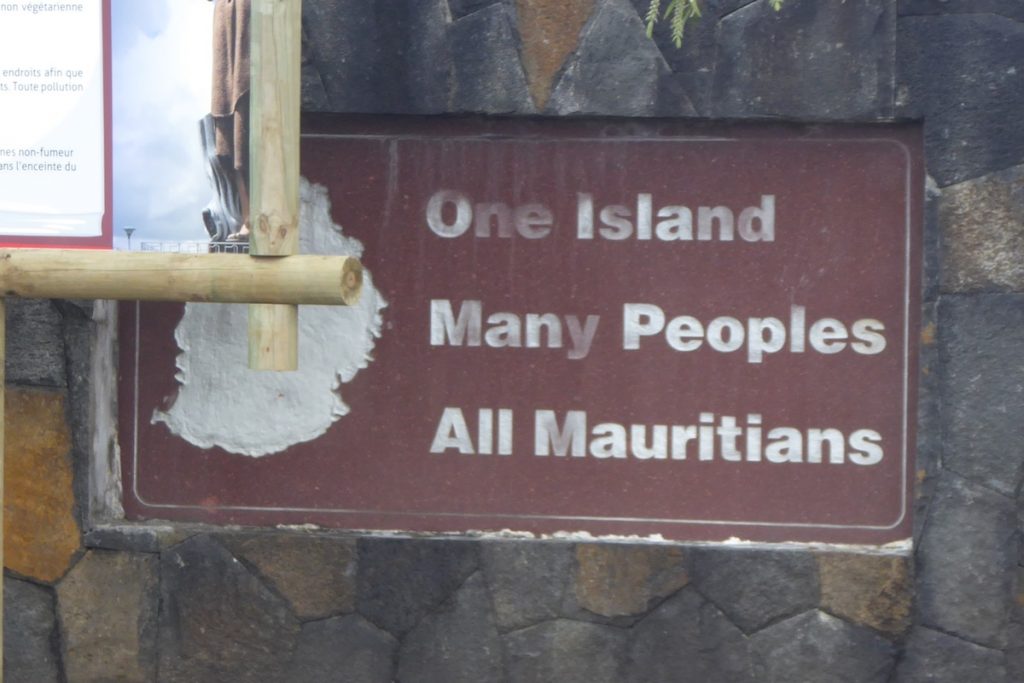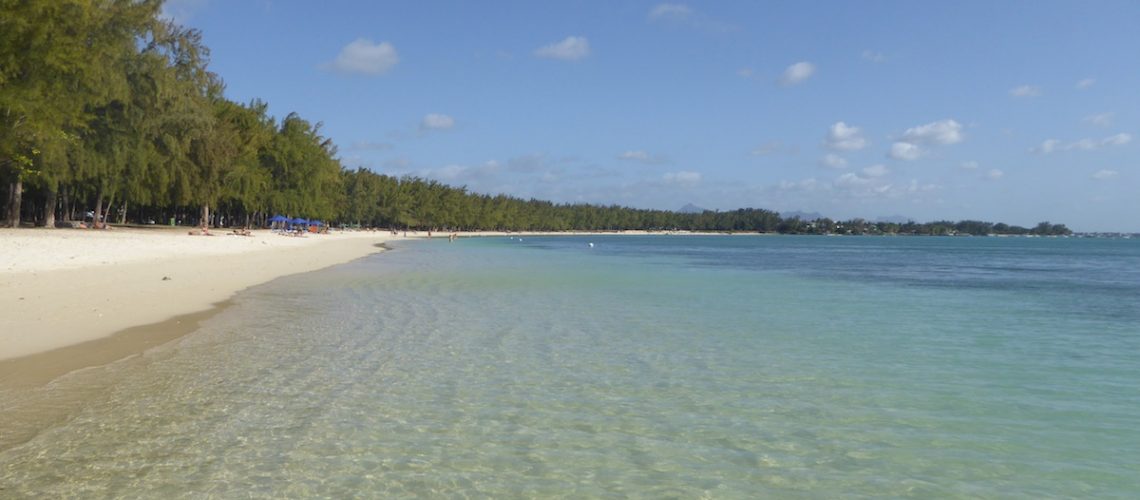Mauritius. We arrived in the early hours, in the dark, and were met by Mr Bim, our airport pick up, to drive us across the island from the south east (where the airport is located) to the north west where we are staying in La Pointe Villas at a place called Pointe aux Canonnieres, a handful of kilometres from Grand Baie regarded as one of the finest bays on the island.
Outside it was raining on and off, and the journey is likely to take about an hour to an hour and a half Mr Bim tells us. Have we been here before he asks? How much do you know about our island? Replying ‘no’ and a mumbled, embarrassed, ‘not a great deal’ opens the door for him to give us a potted history of the island (which I have now added to) and a mini guided tour across the island.
The first Europeans to discover the island were the Portuguese in the sixteenth century (it was originally discovered by Arabs). The Dutch named the island Mauritius, and first tried to colonise it, but abandoned it (for the Cape of Good Hope). A few years later the French took over ( around 1710) and remained in control until the Napoleonic wars with the British in 1810 when it was handed over to them. Following the abolition of slavery, the British brought in workers from Malaysia, China, Africa, but mainly from India to work on the sugar cane plantations.
When Mauritius was discovered there was no indigenous population, and because of that the culture is now a cocktail of French, English, Indian, Chinese and African, with an equally diverse mix of religions (Hindu, Christianity, Islam and Buddhism), the prominent one being Hindu. All these religions sit side by side in harmony, with all faiths embracing the others. This cultural mix also makes for a melange of food. Mauritian curry, fish, French pastries, KFC (obviously), pizza, Chinese noodles and rice.
Outside the Hindu temple at Grand Bassin, is this sign. It really sums up the ethos of the people. They seem proud to live shoulder to shoulder, something other countries could well take note of…

Surprisingly (I thought), according to Mr Bim, the main industry here is still sugar cane. Some exported to countries like the uk, some used in the distilling of the many different (and as it turns out) tasty local rums, but also electricity and thatch for the rooves of buildings. There were 27 processing factories, but these have been reduced to 4 now through improved processes and better machinery. The unemployment level though is very low (circa 6.5%) and there is a state system supporting free education, health service and pensions.
Second on the list of industries is tourism (which I expected to be top), and third textiles. There are many clothes manufacturers operating in mauritius manufacturing garments for many top end designer labels. This is now being challenged from competition from other countries now. Surprisingly there are also diamond cutting factories and watch manufacturers, also making parts and watches for high end (Swiss) brands.
And that’s not the end, there are tea plantations, coffee plantations, and fruit production.
(Subsequently, somebody else told me that the order is different: tourism is first and that sugar is third on the list, whichever order, they are all important for the economy).
Jokingly aside (and amazingly as we’d just got off the plane having had zero sleep courtesy of myriad young children and airline’s insistence on serving food every hour or so), it was an interesting journey.
He tells us (while gesticulating with both hands) how dangerous some of the driving can be locally, whilst simultaneously passing a moped with about 5mm to spare. We see, the local Phoenix brewery (decent beer) as we pass through Port Louis and see the new tram (investment from India) under construction to try to ease some of the rush hour traffic congestion. The kilometres drift slowly past, and we arrive at our apartment.
Now, to put things in perspective, we’ve not seen any palm fringed beaches, nor driven through areas rich with exotic hotels. The island to me, has more of a feel of India about it than anywhere I’ve been before. Our apartment is fine, nice pool, friendly host, (Richard, or Julian as Helen preferred to call him) and just far enough off the main road to be quiet. Except for the frogs that make a racket like a cacophony of jack hammers most evenings.
Later, after a snooze, we head out for a walk. We find a path through to a beach, and this is where Mauritius really comes into its own. Flat turquoise waters turning deep blue. Gentle waves lapping the fine white sandy shore. And completely deserted. Yes, I know it’s still winter here, but I’ve never seen beaches that fine, that empty. It’s still about 25 degrees after all, and the water probably not much cooler…
The beaches are beautiful. White sands, clear seas, backed by palms and trees. Pictures speak a thousand words…
Behind every beach (as well as along the streets) are street food shacks, selling foods from rotis, samosas and vegetable fritters (all for a few pence, and also delicious) to fresh tropical fruits and fresh juice (more expensive but just as tasty). And at the weekend they are filled with local families enjoying what they have on their doorstep. Sitting in the trees behind the beach, with tables, chairs, even tents. Two and three generations together sharing their time.
The island is not just beaches, there are mountains that seem to erupt from the plains (they probably did, as the island is volcanic, and you can stand on the edge of the old caldera at Trou aux Cerfs), indigenous Forrest and of course the reefs that surround the island and give it the calm, warm and dazzling turquoise waters.
Then there is the religion. We were fortunate to be around on September 14th, which is a public holiday for the Ganesh Chaturthi Festivel. A riot of colour and local music, but more about that in another post later.
We’ve walked along the beaches, past the luxury hotel resorts, and I suspect that many of the people who go there see the beautiful beaches, luxuriate in their pampered hotels, but never walk down the street, or jump on a bus, or eat rotis for MRU 12 (28 pence). They see the (beautiful) sanitised travel brochure view of Mauritius, but they don’t see any of life outside.
Don’t get me wrong, it is a beautiful island, but it’s not just a travel brochure picture book. It’s filled with real people, friendly people, working for a living. Living in conditions far from the 5 star hotels. The longer I’ve been here, the more I’ve grown to love the place, not just for the beaches but for the friendliness and diversity of its people.
I’m glad I’ve seen just a little of that, and not just the palm fringed patch of paradise you see in the photos.

4 thoughts on “A Patch of Paradise… 🇲🇺”
Hi you lucky two. Have managed to read it and it sounds and looks wonderful so glad you are having a great time and enjoying everyth(ing. Take care safe journey’s. Enjoy your travels. Xxx
Hi you lucky two. Have managed to read it and it sounds and looks wonderful so glad you are having a great time and enjoying everything. Take care safe journey’s. Enjoy your travels. Xxx
You have convinced us that Mauritius is a place we MUST VISIT before we get much older. We loved doing the ‘local’ thing in Goa, so you are seeing it from the best perspective.
Paul & Alison xx
Having travelled across the island by bus today, we definitely feel that we’ve been mixing it with the locals. But again, people have been really friendly and helpful. We had to take three different busses, and one driver even told us to stay on and he drove us through the terminus and dropped us off next to our next bus.
It did take hours though…..